Allegiance United Kingdom Role Airshow pilot Years of service 1949–1971 | Rank Squadron leader Name Ray Hanna | |
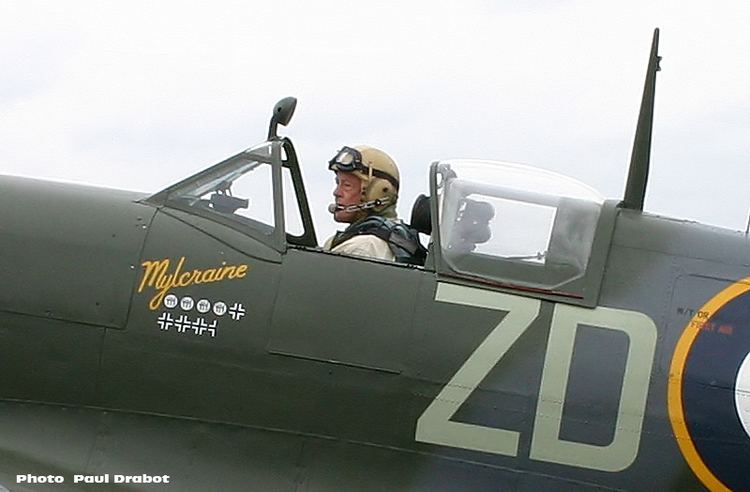 | ||
Died December 1, 2005, Switzerland | ||
Curtiss p40 e kittyhawk fighter aka warhawk flown by ray hanna
Raynham George Hanna AFC (with bar) (28 August 1928 – 1 December 2005) was a New Zealand-born fighter pilot in the Royal Air Force. During his R.A.F. career he was a founding member of its Red Arrows aerobatics display team. He also founded The Old Flying Machine Company which commercially flies World War 2 vintage fighter aircraft at air displays around the globe, and for television and cinematic productions. He was regarded in the aviation community as possibly the finest display pilot of the Spitfire in the world in the latter half of the 20th Century, noted for his deft handling of the machine in flight and daring aerobatic stunt flying.
Contents
- Curtiss p40 e kittyhawk fighter aka warhawk flown by ray hanna
- P 51 mustang display pilot ray hanna new zealand 1996
- Early life
- Royal Air Force career
- Post RAF flying career
- The Old Flying Machine Company
- Personal life
- Death
- References
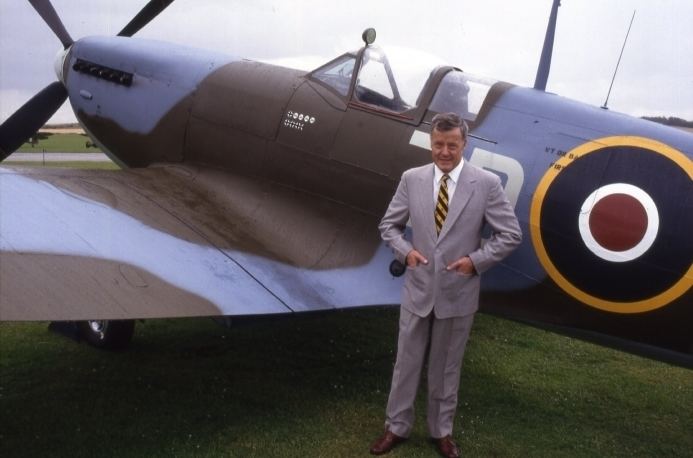
P 51 mustang display pilot ray hanna new zealand 1996
Early life
Hanna was born at Takapuna in New Zealand on 28 August 1928. He received his early formal education at Auckland Grammar School. Whilst still a teenager he received first lessons in flying in the Tiger Moth, and setting his heart on a career as an airman, worked his passage on a merchant ship in 1949 at the age of 21 to England to join the fighter squadrons of the Royal Air Force there.
Royal Air Force career
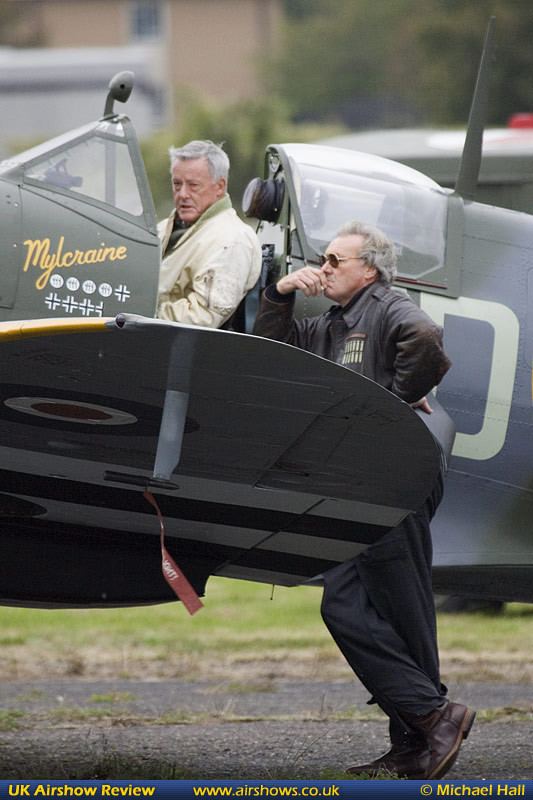
During his initial training with the R.A.F. he flew types such as the Percival Prentice, North American Harvard and Gloster Meteor. He went on to fly the Hawker Tempest, Hawker Sea Fury and Bristol Beaufighter.
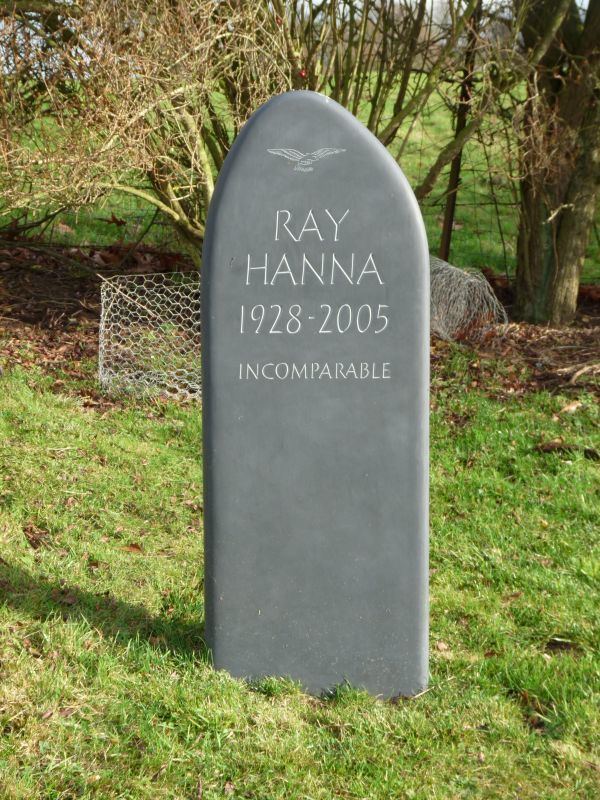
His first operational posting was to No.79 Squadron flying the Meteor FR.9 as part of the NATO Second Allied Tactical Air Force. Hanna flew a number of early British jet aircraft in this period, including the de Havilland Vampire, de Havilland Venom, Supermarine Attacker, Hawker Sea Hawk, Supermarine Swift and Gloster Javelin. Early in his career, Hanna had the opportunity to become involved with aerial display teams, first as the leader of a four-ship Hunter display team in 1957 and then, in 1963–64, as a member of a Meteor display team operated by the College of Air Warfare.
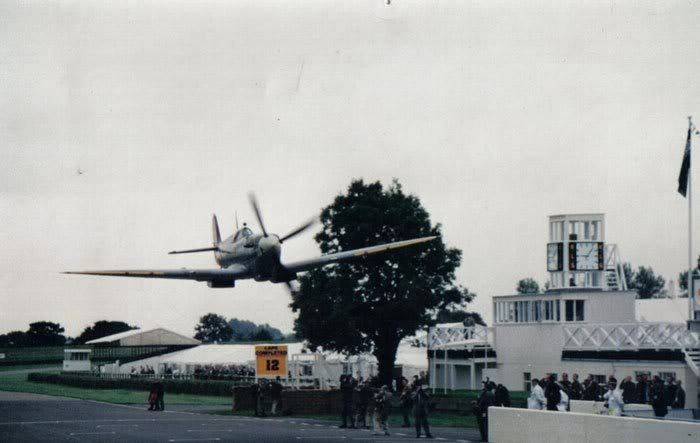
In 1965, Hanna became a member of the Red Arrows display team as 'Red 3'. The following year, he became the team leader, 'Red 1', a post which he held for a record four years. During this time, Hanna oversaw the enlargement of the team to nine Folland Gnat T.Mk1 aircraft, making possible the inclusion of the diamond-nine formation which is a staple feature of Red Arrows display routines to this day. During this period, the Red Arrows became a permanent squadron as part of the Central Flying School. Hanna left the RAF in 1971.
Post-RAF flying career
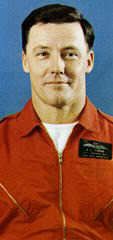
After he left the R.A.F. with the rank of Squadron Leader, Hanna became a commercial airline pilot flying Boeing 707s for Lloyd International, and subsequently spent seven years with Cathay Pacific, flying 707s and Lockheed Tristars. He then headed a company operating Boeing 707s.
The Old Flying Machine Company
At the end of the 1970s Hanna was asked by the Chairman of Cathay Pacific, Sir Adrian Swire, to display Swire's Spitfire LFIXb, MH434. This was the beginning of a long association between Hanna and this particular aircraft that would last until his death. In 1981, he and his son Mark Hanna (then still a serving R.A.F. fighter pilot) established The Old Flying Machine Company, based at Duxford Aerodrome, to commercially operate and display fly a number of vintage military aircraft. In 1983 the company purchased Spitfire MH434 at an auction for its flying stock. In 1988 Mark Hanna resigned from the Royal Air Force to join the company full-time. Throughout the 1980s and 1990s it performed at flying shows around the world, and opened up a spin-off service providing its aircraft for the filming of cinema and television productions, including Piece of Cake (1988), Empire of the Sun (1987), Memphis Belle (1990), Saving Private Ryan (1998) and Tomorrow Never Dies (1997). Hanna flew his Spitfire under the bridge at Winston, near Barnard Castle, for a scene in Piece of Cake.
On 18 July 1996, in a notorious piece of flying, as part of the filming for a television series entitled The Air Show, for a programme about the history of the Spitfire, Ray Hanna flew one across the grounds of Duxford Aerodrome at deck level to the rear of Alain de Cadenet presenting, in a pre-arranged stunt that was a little lower than had been anticipated.
In 1998 at the first meeting of the Goodwood Revival racing car festival, Ray Hanna confounded a trackside crowd, which had been expecting a pass overhead by a Spitfire, by flying it at full throttle on the deck past them across the Goodwood circuit's start/finish line.
On 25 September 1999 Mark Hanna, in his 41st year, crashed in a Bf109 during a performance whilst coming in to land at an airshow in Sabadell, Spain, and died the following day in hospital from the injuries sustained.
Ray Hanna flew the Spitfire for a final time before a crowd at the Duxford Autumn Airshow on 16 October 2005.
Personal life
Hanna married Eunice Rigby in 1957, the marriage producing a son (who predeceased him), and a daughter, Sarah.
Death
Hanna died in his 78th year in Switzerland of natural causes on 1 December 2005.
His body was buried in the graveyard of St Mary's Church, near to the family's home at Parham in the county of Suffolk on 15 December 2005, next to his son's grave; each marked with headstones fashioned in the shape of a Spitfire wing. During the burial, the Red Arrows staged a low level fly-over salute above the graveyard in the Vic formation.
